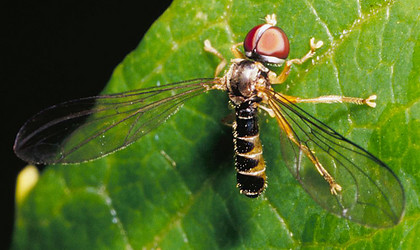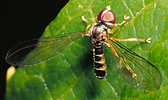Cephalops
Jeff Skevington- Cephalops (Beckerias)
- Cephalops (Cephalops)
- Cephalops (Parabeckerias)
- Cephalops (Semicephalops)
- Cephalops artifrons (incertae sedis)
- Cephalops buclavus (incertae sedis)
- Cephalops chandiensis (incertae sedis)
- Cephalops crassispinus (incertae sedis)
- Cephalops excellens (incertae sedis)
- Cephalops flavocinctus (incertae sedis)
- Cephalops gansuensis (incertae sedis)
- Cephalops gracilentus (incertae sedis)
- Cephalops hirtifemurus (incertae sedis)
- Cephalops incohatus (incertae sedis)
- Cephalops kashmerensis (incertae sedis)
- Cephalops kumaonensis (incertae sedis)
- Cephalops kumatai (incertae sedis)
- Cephalops longicaudus (incertae sedis)
- Cephalops longistigmatis (incertae sedis)
- Cephalops mashobraensis (incertae sedis)
- Cephalops metallicus (incertae sedis)
- Cephalops nigronitens (incertae sedis)
- Cephalops orbiculatus (incertae sedis)
- Cephalops seminitidus (incertae sedis)
- Cephalops shanghaiensis (incertae sedis)
- Cephalops shisanlingensis (incertae sedis)
- Cephalops splendens (incertae sedis)
- Cephalops yoshiyasui (incertae sedis)
Introduction
The 178 valid species of Cephalops are distributed among 4 subgenera. Most of the species are in the nominate subgenus and in the subgenus Semicephalops. Twenty-four species are currently unplaced at the subgeneric level (listed as incertae sedis above). Most Cephalops species that have been reared are parasitoids of Delphacidae.
Characteristics
Cephalops are distinctive long-winged pipunculids, quickly recognizable in the field with some experience. Many of the species are brightly coloured for pipunculids with spots of yellow on the abdomen. The following combination of characters allow lab identification of Cephalops specimens: hind margin of eye straight, ocellar bristles reduced (these characters place them within Pipunculinae); propleuron with a fan of setae (includes Collinias, Microcephalops, Pipunculus, Cephalosphaera and Cephalops), frons not swollen, face not narrowed, discal medial cell expanded medially (excludes Collinias and Microcephalops), setae on thorax restricted to two dorsocentral rows and scattered setae along margins (excludes Pipunculus) and Vein M2 absent (excludes Cephalosphaera).
Cephalops is perhaps the best-studied genus on a world scale. Keys are available for all but the Oriental Region. The best regional keys to use as starting points to identify Cephalops species are as follows: Australia – De Meyer and Grootaert (1992), Afrotropical – De Meyer (1992b), Costa Rica – Rafael and Menezes (1999), Hawaii – Hardy (1953), Japan – Morakote and Hirashima (1990), Nearctic - De Meyer (1989a), Neotropics – Rafael (1990), New Guinea – De Meyer (1990), New Zealand – De Meyer (1991), West-Palaearctic - De Meyer (1989b).
Discussion of Phylogenetic Relationships
There are two papers on the phylogenetics of Cephalops and related taxa. De Meyer (1994) provides a phylogenetic analysis for the Cephalopsini and De Meyer (1993, 1996) provides insights into the Hawaiian pipunculid fauna. All 36 species of Hawaiian pipunculids belong to a single lineage of Cephalops (Semicephalops). The latter paper examines the diversification of this lineage.
References
De Meyer, M. 1989a. Systematics of the Nearctic species of the genus Cephalops Fallén (Diptera, Pipunculidae). Bulletin de l'Institut Royal des Sciences Naturelles de Belgique, Entomologie 59:99-130.
De Meyer, M. 1989b. The West-Palaearctic species of the pipunculid genera Cephalops and Beckerias (Diptera): classification, phylogeny and geographical distribution. Journal of Natural History 23:725-765.
De Meyer, M. 1991. A new Cephalops Fallén, 1810, species from New Zealand (Dipt., Pipunculidae). Entomologist's monthly Magazine 127:215-218.
De Meyer, M. 1992a. Description of new Cephalops species (Pipunculidae, Diptera) from the Oriental Region. Bulletin de l'Institut Royal des Sciences Naturelles de Belgique, Entomologie 62:93-99.
De Meyer, M. 1992b. Revision of the Afrotropical species of Cephalops Fallén (Diptera, Pipunculidae). Journal of African Zoology 106:81-111.
De Meyer, M. 1993. Phylogeny and evolutionary zoogeography of the Hawaiian Pipunculidae (Diptera). Zeitschrift fur Zoologische Systematik und Evolutionsforschung 31:119-126.
De Meyer, M. 1994. Phylogenetic relationships within the Cephalopsini (Diptera, Pipunculidae). Bulletin et Annales de la Société Royale belge d'Entomologie 130:7-18.
De Meyer, M. 1996. Cladistic and biogeographic analyses of Hawaiian Pipunculidae (Diptera) revisited. Cladistics 12: 291-303.
De Meyer, M., and P. Grootaert. 1990. Pipunculidae (Diptera) from Papua New Guinea: the genera Cephalosphaera, Cephalops and Beckerias. Zoologica Scripta 19:403-412.
De Meyer, M., and P. Grootaert. 1992. Pipunculidae (Diptera) from Australia: The genera Cephalops Fallén and Beckerias Aczél. Invertebrate Taxonomy 6:143-158.
De Meyer, M., and M. Kozánek. 1990. Description of a new species of the genus Cephalops Fallén (Diptera, Pipunculidae) from North Korea. Biológia (Bratislava) 45:827-830.
Hardy, D. E. 1953. Studies in Hawaiian Dorilaidae (Diptera) Part I. Proceedings of the Hawaiian Entomological Society 15:59-73.
Kehlmaier, C. and M. De Meyer. 2005. On the identity of Pipunculus straminipes BECKER, 1900 (Diptea: Pipunculidae). Studia dipterologica. 11(2):600-602.
Kozánek, M., and M. De Meyer. 1992. A new Cephalops Fallén, 1810 species from North Korea (Diptera, Pipunculidae). Bulletin de l'Institut Royal des Sciences Naturelles de Belgique, Entomologie 62:101-103.
Kozánek, M., and P. Lauterer. 1987. The pipunculid genus Cephalops Fallén (Diptera) in Czechoslovakia. Annotationes Zoologicae et Botanicae 180:1-19.
Morakote, R., and Y. Hirashima. 1990. A systematic study of the Japanese Pipunculidae (Diptera) Part III. The genus Cephalops Fallén. Journal of the Faculty of Agriculture, Kyushu University 34:183-214.
Rafael, J. A. 1990. Revisăo das espécies Neotropicais do gęnero Cephalops Fallén (Diptera: Pipunculidae). Acta Amazonica 20:353-390.
Rafael, J. A., and M. D. d. S. Menezes. 1999. Taxonomic review of Costa Rican Pipunculidae (Insecta: Diptera). Revista de biologia tropical 47:513-534.
Title Illustrations

| Scientific Name | Cephalops |
|---|---|
| Location | Ecuador, Napo, Sierr Azul Res., 14 km W Cosanga |
| Specimen Condition | Live Specimen |
| Identified By | Jeff Skevington |
| Sex | Female |
| Life Cycle Stage | adult |
| Collection | University of Guelph |
| Collector | S.A. Marshall |
| Copyright |
© Steve Marshall

|
About This Page

Agriculture and Agri-Food Canada, Ottawa, Ontario, Canada
Correspondence regarding this page should be directed to Jeff Skevington at
Page copyright © 2005
 Page: Tree of Life
Cephalops.
Authored by
Jeff Skevington.
The TEXT of this page is licensed under the
Creative Commons Attribution License - Version 3.0. Note that images and other media
featured on this page are each governed by their own license, and they may or may not be available
for reuse. Click on an image or a media link to access the media data window, which provides the
relevant licensing information. For the general terms and conditions of ToL material reuse and
redistribution, please see the Tree of Life Copyright
Policies.
Page: Tree of Life
Cephalops.
Authored by
Jeff Skevington.
The TEXT of this page is licensed under the
Creative Commons Attribution License - Version 3.0. Note that images and other media
featured on this page are each governed by their own license, and they may or may not be available
for reuse. Click on an image or a media link to access the media data window, which provides the
relevant licensing information. For the general terms and conditions of ToL material reuse and
redistribution, please see the Tree of Life Copyright
Policies.
- First online 02 November 2005
Citing this page:
Skevington, Jeff. 2005. Cephalops. Version 02 November 2005 (under construction). http://tolweb.org/Cephalops/54644/2005.11.02 in The Tree of Life Web Project, http://tolweb.org/








 Go to quick links
Go to quick search
Go to navigation for this section of the ToL site
Go to detailed links for the ToL site
Go to quick links
Go to quick search
Go to navigation for this section of the ToL site
Go to detailed links for the ToL site